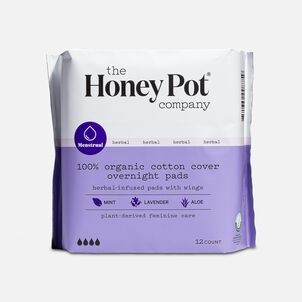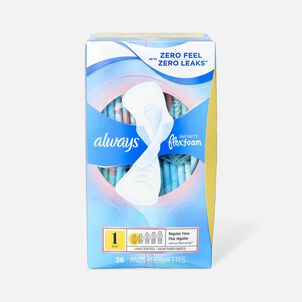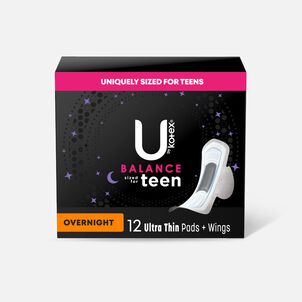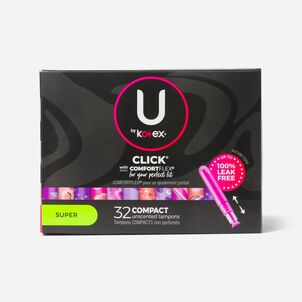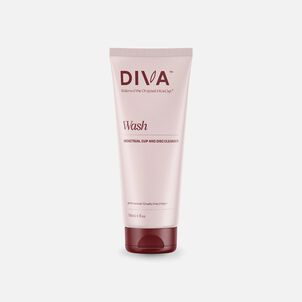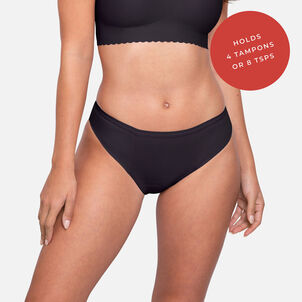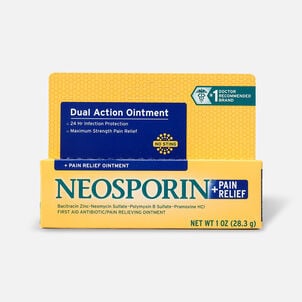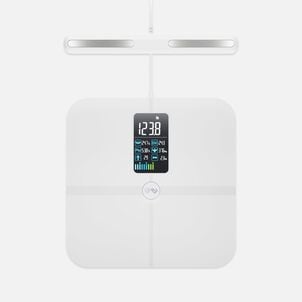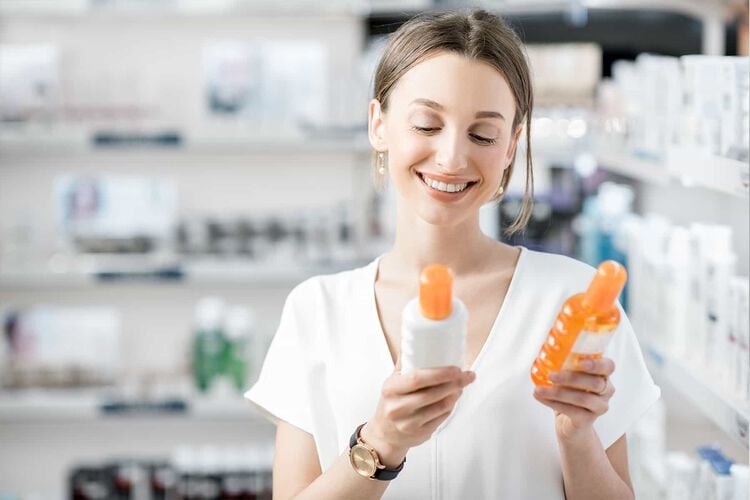Which is better: tampons vs. pads? Folks have been asking for years—and the debate may continue as new menstrual products emerge. You may pick a side early in your menstrual journey or make the switch many years down the road. The problem is there are many factors at play that can make the decision tougher than you expect.
The good news is it's now cheaper to try all the different options on the market. In March 2020, the CARES Act finally made menstrual products FSA and HSA-eligible. This means you can now use pre-tax dollars to pay for things like tampons, sanitary pads, menstrual cups, and more. Whether you're starting out—or want to make a switch—we have covered the most popular product options. Here's how to decide which is right for you.
As you're comparing menstrual products, sanitary pads—which stick to the inside of your underwear—may be the first one to try. Pads are made with natural and synthetic fibers, including rayon and cotton. They are the most popular menstrual product option, according to a FiveThirtyEight report—and it's easy to see why.
If you have a heavier period, you may consider sanitary pads for more protection. Some women also use them as a back-up with tampons. You may prefer sanitary pads if you find tampons uncomfortable or hate to insert them. There are different pad thicknesses to choose from and you won't have to worry about toxic shock syndrome.
Although sanitary pads are the top option for many women, there are some cons to consider. They may be visible through some clothing—and are tough to wear with certain types of underwear. Sanitary pads may shift when you move and you can't swim while wearing one. Depending on your flow, you may have to replace your sanitary pad every few hours, which may create a lot of waste.
Tampons, which reign second in popularity, are cotton pads you insert into the vagina with an applicator or your fingers. Depending on your flow, there are different tampon sizes, from light to heavy.
There are many perks to using tampons. If you insert it the right way, you won't be able to feel it. The product isn't visible through your clothing and you don't have to worry about it shifting. The product is also smaller than a sanitary pad, which makes it easier to fit into a purse or your pocket. Another plus: you can swim while wearing a tampon.
Unfortunately, the biggest downside is a scary one: the potential for toxic shock syndrome. While it doesn't happen often—around 0.8 to 3.4 per 100,000 people in the United States—it can be life-threatening. You may avoid the risk of getting toxic shock syndrome by using lower absorbency tampons and changing them often.
Another downside is tampons can be uncomfortable—and can cause irritation or dryness. Tampons are also a less environmentally-friendly option with millions going into the landfill every year.
Fun fact: according to MedicalNewsToday, menstrual cups have been around since 1932. L.J. Goodard patented a bell-shaped receptacle that women could use to insert into their vagina to collect menstrual blood. Today's menstrual cups look similar—but are made of medical-grade silicone, latex, rubber, or elastomer.
If you're trying to cut back on waste, you may look for reusable menstrual cups. These products come in a variety of sizes and are easy to clean. Best of all, a reusable menstrual cup may last for up to 10 years.
Some more perks: you may wear a menstrual cup for up to 12 hours. Once you have inserted a menstrual cup, you won't feel it—and you can wear it while swimming or having sex. It won't impact your outfit choices, your vagina's PH, and it may prevent odors.
There are some downsides, though. Although you may save money in the long-term, there is a high upfront cost of $25 to $40. Menstrual cups can also be messy—and may not be enough protection for those with heavy periods. They can be tough to insert, and if you're not careful, you could dislodge an IUD.
Another option that has been growing in popularity is period underwear—a.k.a. menstrual underwear or period panties. These reusable garments may absorb up to a couple of tampons or sanitary pads worth of blood.
While you may spend more upfront, you may use them longer, which will save you money over time. Plus, you won't be contributing to waste like tampons or sanitary pads. They may be enough for a light or medium flow—and some women use them as nighttime back-up protection.
One of the biggest downsides is the upfront cost—which is more than regular underwear—and they may not be enough for heavy periods. You also may have to spend more time washing period underwear. This could make them a less convenient option.
While many menstrual products market themselves to women, there's also a growing list of gender-neutral options. These gender-neutral products may cause less body dysphoria for folks who menstruate but don't identify as female. For example, some companies have started selling period boy shorts or boxer briefs.
Menstrual disks are a newer disposable menstrual product option. According to the University of Texas at Austin, the disks are made of medical-grade polymer—and mold to your shape. You can insert the disk with your fingers. It rests at the bottom of your cervix where it collects your menstrual fluid into a soft bag.
You may still have sex while wearing a menstrual disk, which is a unique perk. There's also less of a chance the product will slip, making it an ideal option for wearing during exercise. The biggest downside is the price. A box of eight to twelve disks may cost between $10 to $20 and you may use eight disks for every cycle. It's a more expensive option than tampons or disposable sanitary pads.
If you're on the market for reusable menstrual products, you may also check out cloth sanitary pads. These two-piece products work the same way disposable sanitary pads do. The biggest difference is the ability to wash and reuse them.
One of the upsides of reusable cloth pads is they may be cheaper than buying disposable sanitary pads over time. They also may be more flexible, breathable, and less bulky. You may also pick reusable pads if you're looking to reduce waste.
Some of the potential downsides of cloth sanitary napkins are the bigger upfront costs and the inconvenience of washing them. If you don't wash cloth sanitary pads quickly enough, they may stain.
Tampons vs pads: which is right for you?
When it comes to the tampons vs pads debate, there are plenty of strong arguments for either side. There are also fans of other options like menstrual cups, period underwear, discs, sponges, and more. Before selecting your go-to period product, you may want to try some of the different options yourself.
As the tampon tax continues to spike the price of these products, you may be looking for ways to save. Luckily, the CARES Act has made it easier than ever to use your pre-tax FSA money on menstrual products. Your final decision may depend on cost, convenience, and comfort—which may be easier to gauge after you have tested each one.
-
Thanks for visiting the FSA Learning Center! To stay on top of all FSA news that can affect your health and financial wellness, be sure to follow us on Facebook and Twitter.
Zina Kumok
Zina Kumok is a freelance writer specializing in personal finance. A Certified Financial Health Counselor and Student Loan Counselor, she also works as a money coach helping people one-on-one at Conscious Coins. She has been featured in Lifehacker, DailyWorth and Time. She paid off $28,000 worth of student loans in three years.





